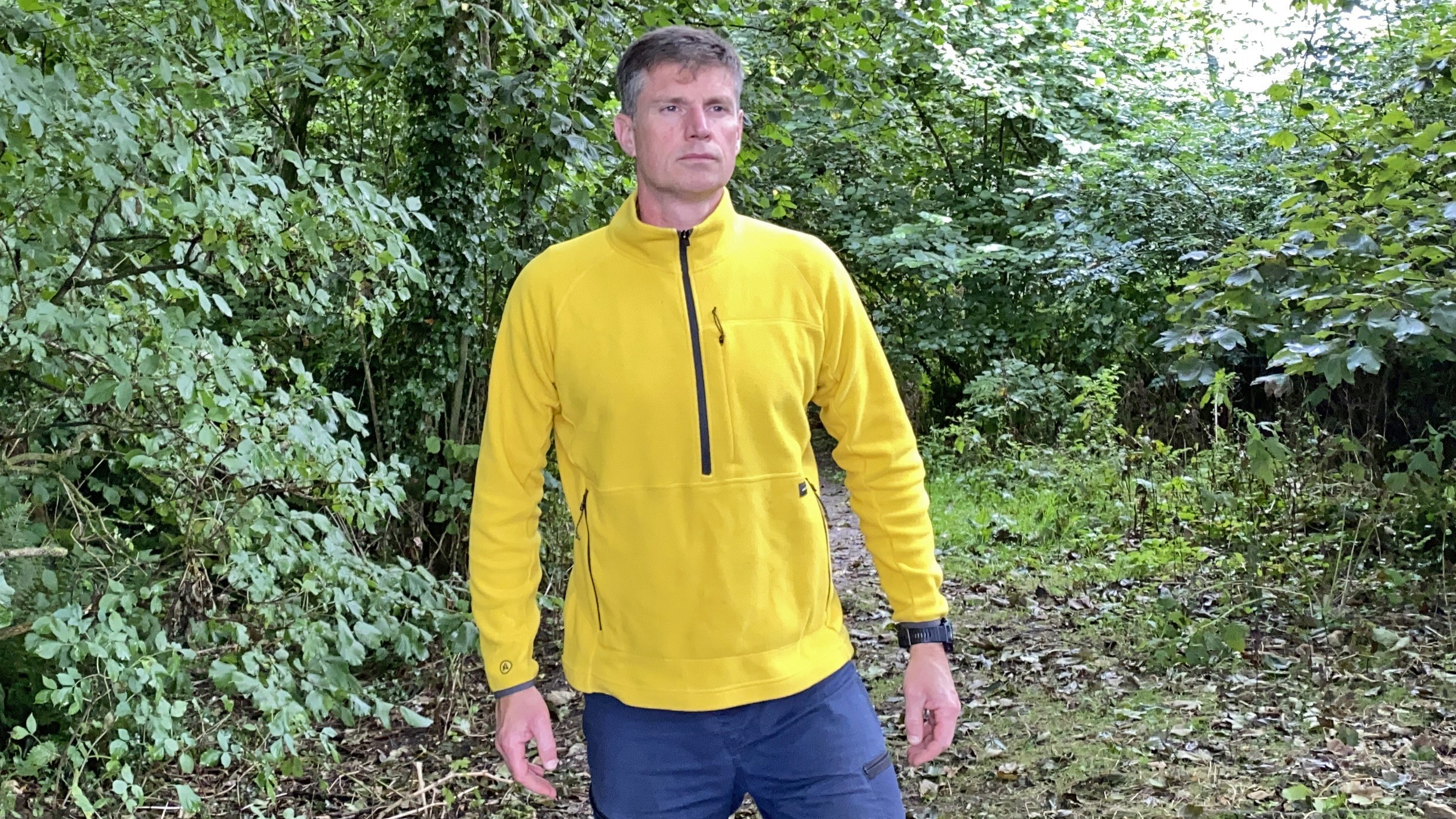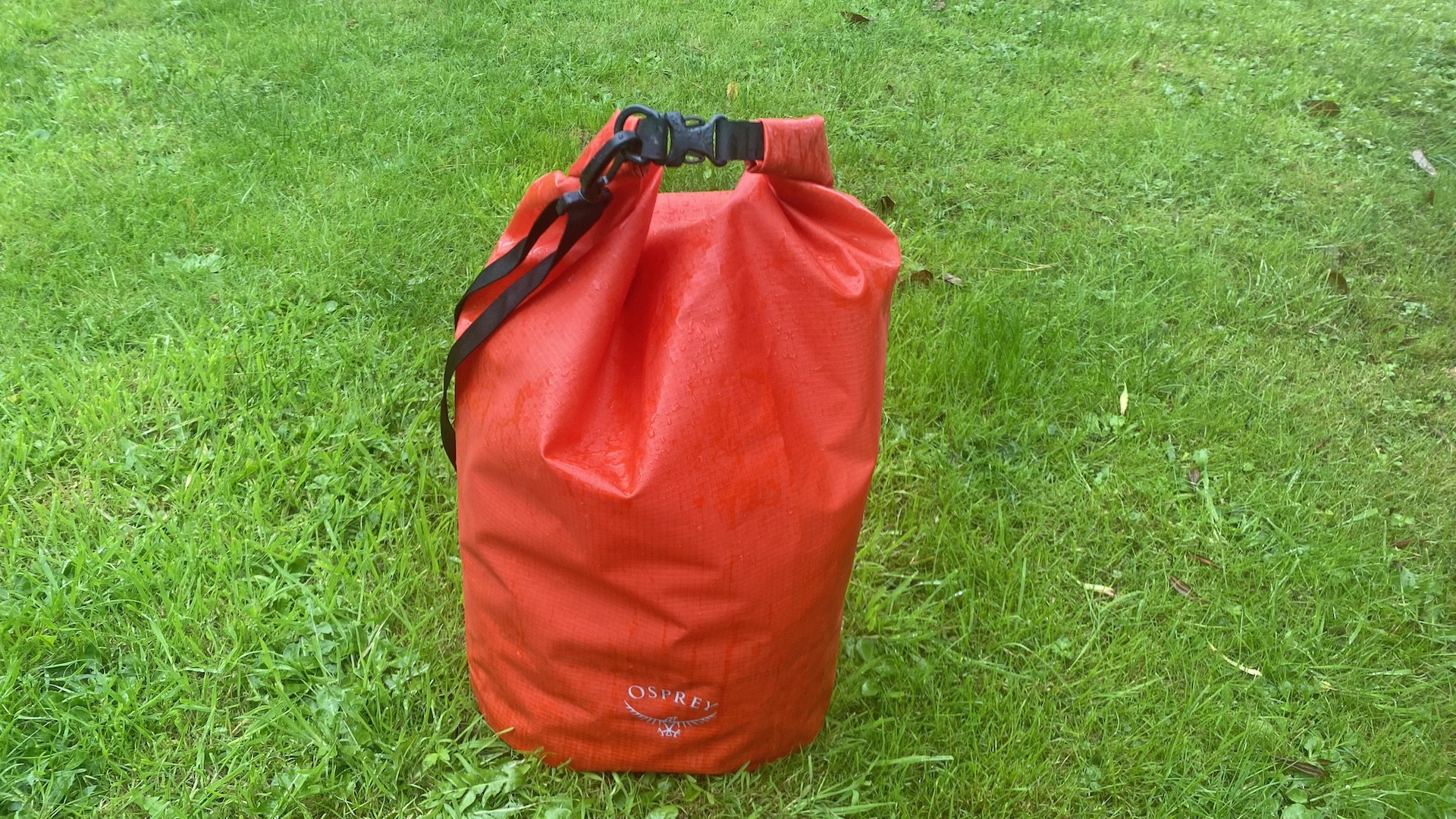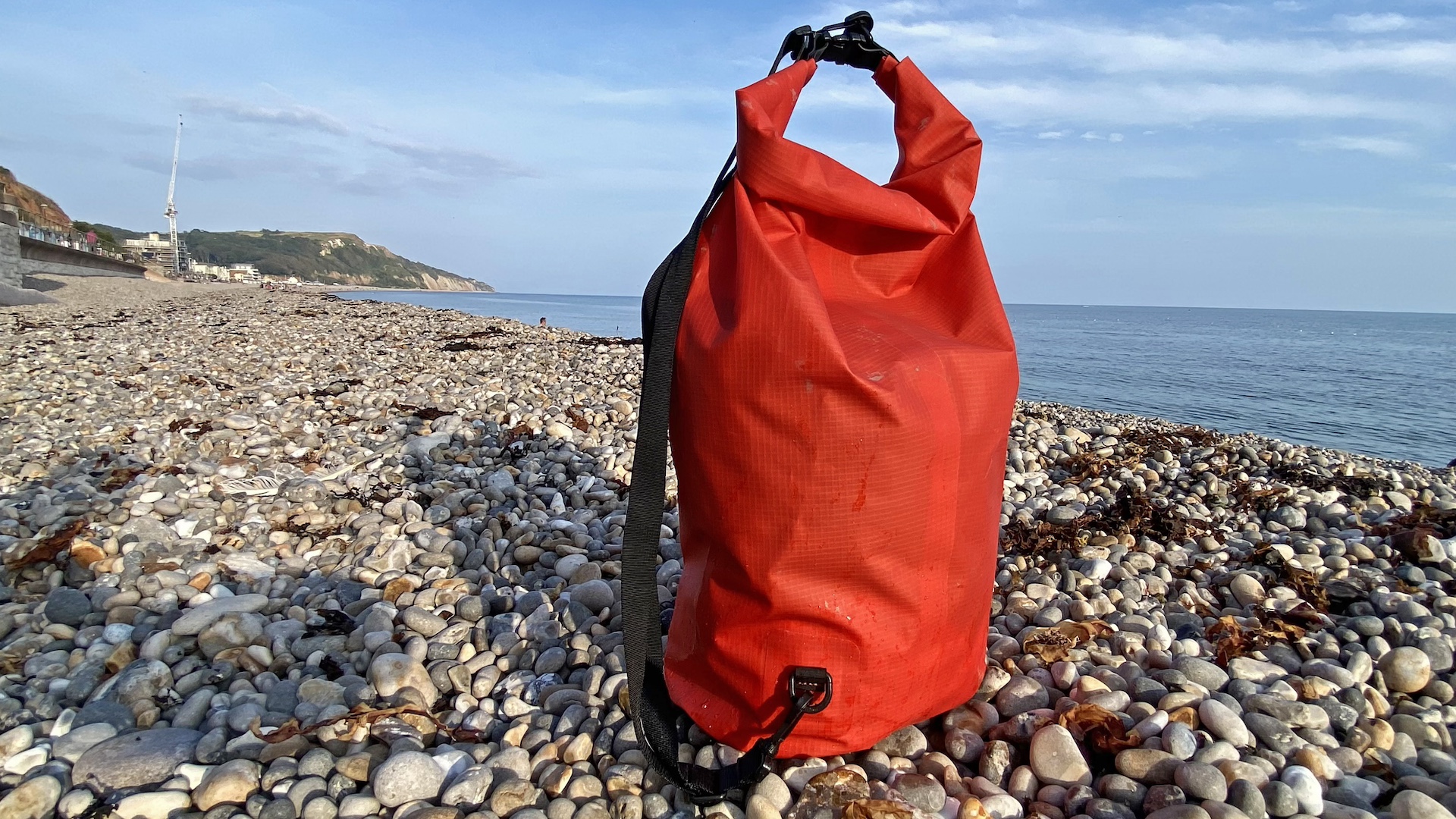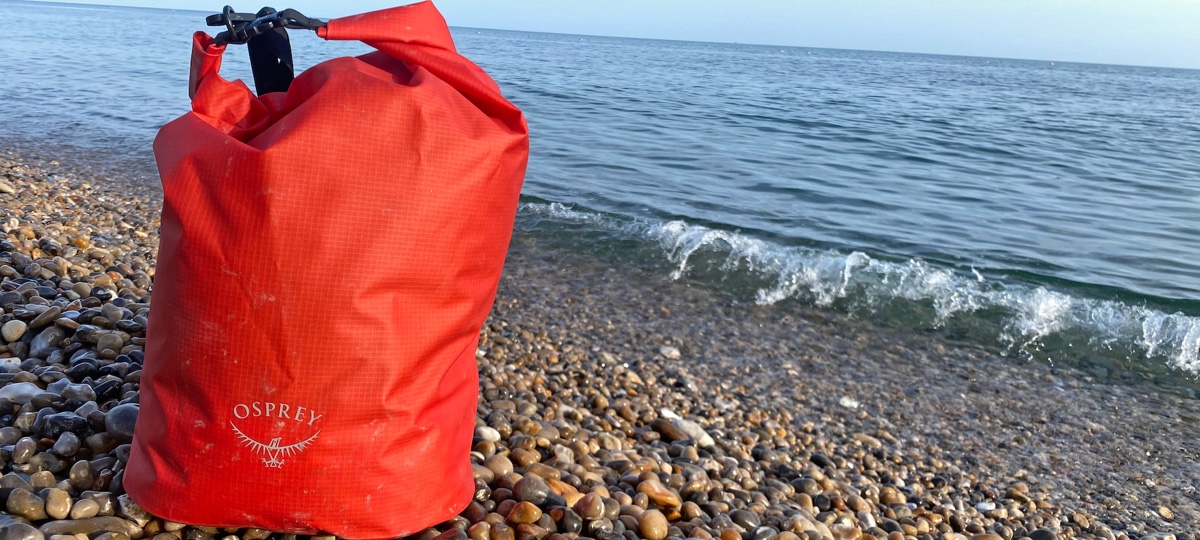Advnture Verdict
Don’t be put off by a premium price-tag and the basic looks. The Wildwater range of dry bags from Osprey boasts good build quality and robust materials, which means they will perform at a higher level and last longer than cheaper, inferior bags. Plus, they’re made from 100% recycled fabric. The double-ripstop main material will put up with some rough-and-tough treatment and still protect your kit, and the D-rings are extremely robust. Available in various sizes, and with a shoulder strap that comes included, the Wildwater is a very versatile dry bag that can be used by hikers, trekkers, day walkers, wild swimmers, coastal explorers, SUPers and paddlers of all kinds of watercraft.
Pros
- +
Robust and reliable
- +
Very versatile
- +
Easy to clean
- +
Good D-rings
- +
Shoulder strap
- +
Made from fully recycled fabrics
Cons
- -
No window
- -
No valve for removing excess air
- -
More bright color options would be good
- -
Relatively pricey
You can trust Advnture
Meet the reviewer

Pat has hiked all over the world, his adventures taking him to Mont Blanc, the roof of Western Europe; the Norwegian Alps; the highest peaks in Australia; and New Zealand’s Great Walks – among others. He’s an experienced tester of trail running gear and gives kit a thorough thrashing before reviewing.
Osprey Wildwater Dry Bag: first impressions

When it comes to bags and carrying solutions in general, Osprey products are high on my list of preferences. The North American brand’s backpacks and daypacks are amongst the best available, unfailingly featuring excellent harnesses, a range of fantastic features, robust materials and excellent build quality. They’re not cheap, but looked after they last decades and make carting gear on the trail as pleasant as it can possibly be.
• List price (25L version): $50 (US) / £55 (UK)
• Waterproof rating: IPX5
• Weight (25L version, empty, with shoulder strap): 307g / 10.8oz
• Volumes available: 8L / 15L / 25L / 35L / 50L
• Dimensions (25L version, H x W x D): 51cm x 30cm x 23cm / 20in x 12in x 9in
• Material: Recycled high-tenacity nylon with double-sided ether-based TPU
• Colors: Blue Spikemoss / Mars Orange / Tunnel Vision Gray
• Closure method: Roll-top and clip
• Extras: Shoulder strap
These days Osprey also make bags for waterborne adventurers as well as trail trampers. At the beginning of this year I was using, abusing and tough testing the Osprey Transporter pack, which is essentially a 30L dry bag with one of those aforementioned quality harnesses attached to it, to give you a watertight daypack.
It’s a great bag that I still use regularly during wild weather days out, but sometimes you need a more traditional dry bag that you can take on SUPing and paddling adventures, or use to protect a precious sleeping bag or dry clothes such as base layers, fleeces and down jackets in a hiking backpack when you’re walking in the rain.
Over the spring and summer just gone, and now into fall, I have been wet-testing just such a product in the shape of the 25L Osprey Wildwater Dry Bag. I’ve taken it out on the water and on the trails in a range of conditions to see how it compares to the best dry bags on the market.
Osprey Wildwater Dry Bag: sizes and materials

I’ve been using the 25L-sized option, which I think is ideal for the uses described above – it makes a perfect liner for a daypack, will easily swallow a lightweight sleeping bag plus a range of clothing, and is ideally suited for taking a towel and some supplies on a SUPing or paddling trip, because it fits nicely in the storage compartments of a kayak or in the bow of a canoe.
However, this premium-priced dry bag is available in a wide range of sizes for a variety of uses, staring with the little 8L version ($35 / £45) – which is useful if you like to organize things into different bags within your main pack – and increasing in size through 15L ($42.50 / £50), 25L ($50 / £55) and 35L ($60 / £60), right up to the 50L ($70 / £70) beast, which will fit a huge amount of gear, and can be used as a liner for a large travel or expedition backpack.
All of the Osprey Wildwater dry bags are made with bluesign-certified, 100% recycled, 210D nylon double-ripstop fabric, with welded seams, and feature a TPU laminate lining. The tried-and-tested ingress rating is IPX5, which means that once properly closed (you must fold the top over at least three times and then clip the ends shut) the bags are waterproof, but not entirely submergible. They come with a 3cm / 1.5in wide shoulder strap, which clips into robust plastic D-rings positioned at the top and bottom of the bag, with some excellent stitching around the lower one to guard against failure.
Osprey Wildwater Dry Bag: performance

I first started using this bag in spring, and continued to test and it through what has been a pretty soggy summer (disappointing weather on many levels, but good for trialing dry bags), and into an equally watery fall.
I’m a keen paddler of SUPs, kayaks, canoes, packrafts and anything else that floats, and this bag has been my reliable companion on many a water-based escapade this year. With strong and durable D-rings at the top and bottom, and a strap included, the bag can be securely attached to boards, canoes and rafts in various ways, or tucked safely away behind the seat, in the nose or within a dry storage compartment of a kayak.
The waterproof protection it supplies during such aquatic adventures, when some splashing and general drenching is guaranteed, is absolutely fine. You’re not supposed to fully submerge these bags, but it’s difficult to imagine a scenario when you’d want or need to. In fact – unless you ‘burp’ absolutely all the air out of the bag, it’s almost impossible to push them under the surface of the water. This, of course, is a bonus, because if you fail to secure the bag properly and it ends up in the drink, it will float and be entirely retrievable, as opposed to taking you gear to the bottom of the river, sea or lake. (In my opinion, the bright orange is the best color option for this bag, because it makes locating it in the water much easier in such a scenario.)
The 25L bag I have been using is also ideal for carrying a robe-style towel, a wooly hat, a thermos flask full of restorative liquids, and some warm layers (like a puffer jacket) when you’re heading to the beach, river, lake or loch for wild swimming outings too.
While it’s not as comprehensive as the harness on the Osprey Transporter (which is better for heavier loads) the shoulder strap on the Wildwater bags is perfectly comfortable for carrying such light loads. It can even be used as a tow-bag for short water crossings. The double-ripstop material is hard wearing and can put up with light-level brushing against rocks and undergrowth when you’re accessing remote put-in points (although I wouldn’t push it too far – definitely avoid scraping it over barnacles and the like). On the way home you can reverse the load and store your wetsuit and water shoes in the bag, which won’t drip all over your dry clothes as you walk back out with it slung over your shoulder.

Well away from the sea and riverside, I’ve used this dry bag as a pack liner for my non-waterproof daypacks on numerous outings, and to store things I really want to keep dry (sleeping bag and clothes) within larger hiking packs on longer, multi-day adventures. It provides real security and peace of mind when you’re out on the trail and the rain starts falling hard. I’ve often found it useful to carry a second, smaller version of the Wildwater dry bag to stash my wet and dirty gear in after getting changed following a soaking, to stop it making the rest of my kit damp (the 15L bag is ideal for this).
Are the bags perfect? No – they’re missing a transparent window so you can see what you’ve got stored inside (particularly useful when using multiple bags), there is no valve incorporated into the design for squeezing out excess air (so you need to burp them in the traditional way), and the color range isn’t all that brilliant. However, the Wildwater dry bags are an excellent option for all-weather hikers, bikers, day walkers, wild swimmers and paddlers.

Author of Caving, Canyoning, Coasteering…, a recently released book about all kinds of outdoor adventures around Britain, Pat has spent 20 years pursuing stories involving boots, bikes, boats, beers and bruises. En route he’s canoed Canada’s Yukon River, climbed Mont Blanc and Kilimanjaro, skied and mountain biked through the Norwegian Alps, run an ultra across the roof of Mauritius, and set short-lived records for trail-running Australia’s highest peaks and New Zealand’s Great Walks. He’s authored walking guides to Devon and Dorset, and once wrote a whole book about Toilets for Lonely Planet. Follow Pat’s escapades on Strava here and Instagram here.

